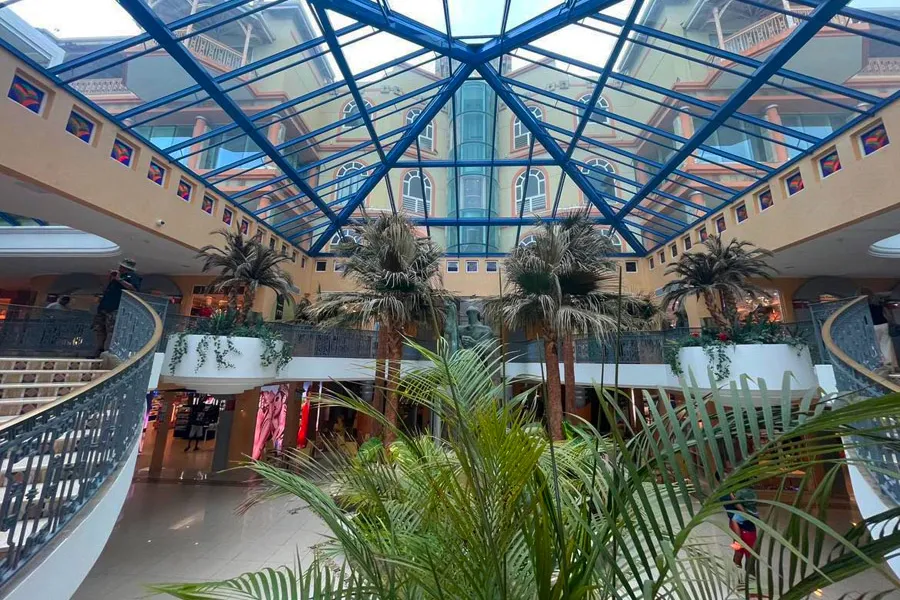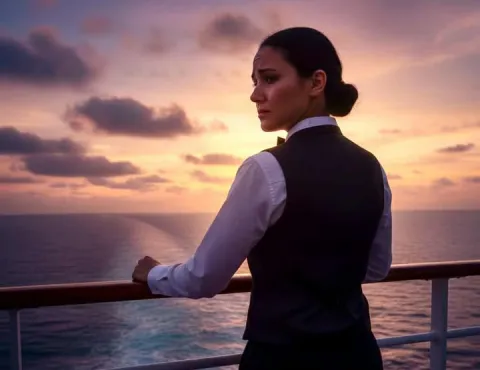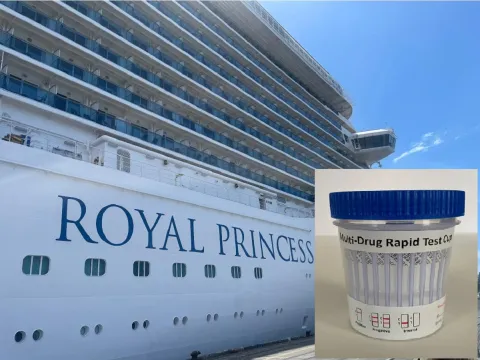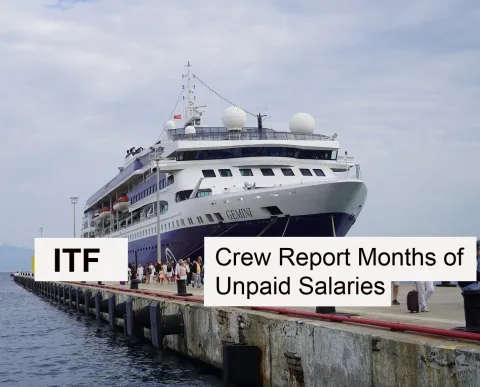
Before purchasing a particular item on the cruise ship, do a little research about it. Crew members on board the vessel are even entitled to further discounts in some ports of call. Of course, if you are a crew member on board the cruise ship, you are entitled to some jewelry at discounted prices. If your contract is about to end, and you want to buy some gifts, perfumes, a watch, or an expensive bottle of wine, inquire about protocols and procedures upon entering your home country on the way back from the cruise ship. On the other hand, if you don't do that, some of the items in your luggage could even be confiscated or double-taxed.

The words "duty-free" are so enticing we find them hard to resist. We dream of bargains in every port, with 30 percent or more off retail prices. We just can't wait to set sail and start saving money.
Well, folks, that was years ago. Nowadays, duty-free is still a huge business -- and a very profitable one. However, it's rarely the bargain we expect. On the other hand, duty-free shops must now compete with online sales (often discounted), so they carry a better selection of goods to lure buyers. Suppliers are stocking more current merchandise, such as the latest watch models, new fragrances, and new skincare products.
You need to be smart about what you buy if you want to guarantee you're getting a good deal.
Because the U.S. government allows its citizens to take (or send) home more duty-free goods from the U.S. Virgins than from other ports of call, the islands remain the shopping bazaar of the Caribbean. U.S. citizens may carry home $1,400 worth of goods untaxed, as opposed to only $400 to $600 value of goods from most other islands in the Caribbean. (The only exception to this rule is Puerto Rico, where any purchase, regardless of the amount, can be carried tax-free back to the U.S. mainland.) St. Maarten/St. Martin, ruled jointly by France and the Netherlands, gives the Virgins some serious competition. It is virtually a shopper's mall, especially on the Dutch side. However, the U.S. doesn't grant generous Customs allowances to St. Maarten/St. Martin that it does to its own islands, the island doesn't have duty so that you can find some attractive bargains.
Aruba: The wisest shoppers in Aruba are cost-conscious souls who have carefully checked the prices of comparable goods before leaving home. Duty is relatively low (only 3.3%). Much of the European china, jewelry, perfumes, and watches have a disturbing habit of reappearing in every shopping mall and hotel boutique on the island, so after you determine exactly what brand of watch or china you want, you can compare.
Barbados: Local shops seem to specialize in all things English. Merchandise includes bone china from British and Irish manufacturers, watches, jewelry, and perfumes. Bridgetown's Broad Street is the shopping headquarters of the island. However, some of the stores here maintain boutiques (with similar prices but a less extensive range of merchandise) at many of the island's hotels and in malls along the congested southwestern coast. Except for cigarettes and tobacco, duty-free items can be hauled off by any buyer as soon as they're paid for. Duty-free status is extended to anyone showing a passport or ID and an airline ticket with a date of departure from Barbados.
The Cayman Islands: Goods are sold tax-free from a daunting collection of malls and minimalls throughout Grand Cayman. Most of these are along the highway that parallels Seven Mile Beach; you'll need a car to shop around. There are also many stores in George Town, which you can explore on foot, poking in and out of some large emporiums to search for bargains.
Curaçao: In the island's capital, tidy and prosperous Willemstad, hundreds of merchants are too happy to cater to your needs. A handful of malls lie on Willemstad's outskirts, but most shops are clustered within a few blocks of the center of town. During seasonal sales, goods might be up to 50% less than comparable prices in the United States; most of the year, you'll find luxury items (porcelain, crystal, watches, and gemstones) priced at about 25% less than in the U.S. Technically, you'll pay import duties on virtually everything you buy, but rates are so low you may not even notice.
The Dominican Republic: The island's best buys include handicrafts, amber from Dominican mines, and the distinctive pale-blue semiprecious gemstone known as Larimar. The amber sold by street vendors may be orange-colored, transparent plastic; buy only from well-established shops if your investment is large. Other charming souvenirs might include a Dominican rocking chair (JFK used to sit in one), which is sold boxed in ready-to-assemble pieces. Malls and souvenir stands abound in Santo Domingo, Puerto Plata, and along the country's northern coast.
Jamaica: The shopping was better in the old days before taxes added a 10% surcharge. Despite that, Jamaica offers a wealth of desirable goods, including flavored rums, Jamaican coffees, handicrafts (such as woodcarvings, woven baskets, and sandals), original paintings and sculptures, cameras, watches, and DVD players. Unless you're a glutton for handmade souvenirs (available on virtually every beach and street corner), you'd be wise to limit most of your purchases to bona fide merchants and stores.
St. Maarten/St. Martin: Because of the massive influx of cruise ships, shopping in Dutch St. Maarten is now about the finest in the Caribbean for deals in electronics, cameras, designer fashions, watches, and crystal, along with linens and jewelry. Because there's no duty, prices can be 30% to 40% lower than in the U.S. Philipsburg, the capital of the island's Dutch side, is the best place to shop. Although it can't compete with Dutch St. Maarten, French St. Martin is becoming a more popular shopping destination, especially for goods such as fashion or perfumes imported from France.

St. Croix: This island doesn't have the massive shopping development of St. Thomas, but its merchandise has never been more wide-ranging than it is today. Even though most cruise ships call at Frederiksted, with its urban mall, our favorite shops are in Christiansted, which has many one-of-a-kind boutiques and many special finds. Prices are about the same here as in St. Thomas.
St. Thomas: Many of its busiest shops are in restored warehouses that were originally built in the 1700s. Charlotte Amalie, the capital, is a shopper's town, with a staggering number of stores stocked with more merchandise than anywhere else in the Caribbean. However, real bargains are hard to come by despite all the fanfare. Regardless, the island attracts hordes of cruise ship passengers on a sometimes frantic hunt for bargains, real or imagined. Look for two local publications, This Week and Best Buys; either might steer you to the merchandise you seek. Try to avoid shopping when more than one cruise ship is in port -- the shopping district is a madhouse on those days.
Crew Insights
Articles and experiences shared by crew members working on cruise ship. Find out more about ship life at sea together with tips and advices for first time crew members and cruise oldtimers.












